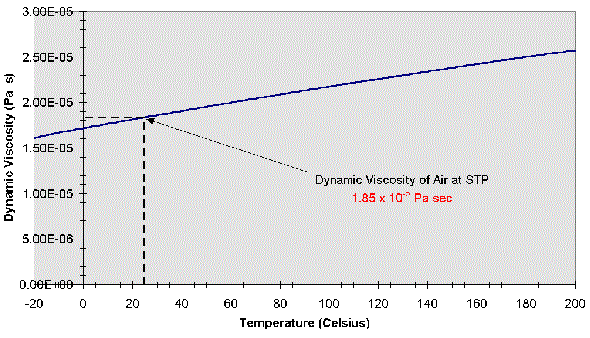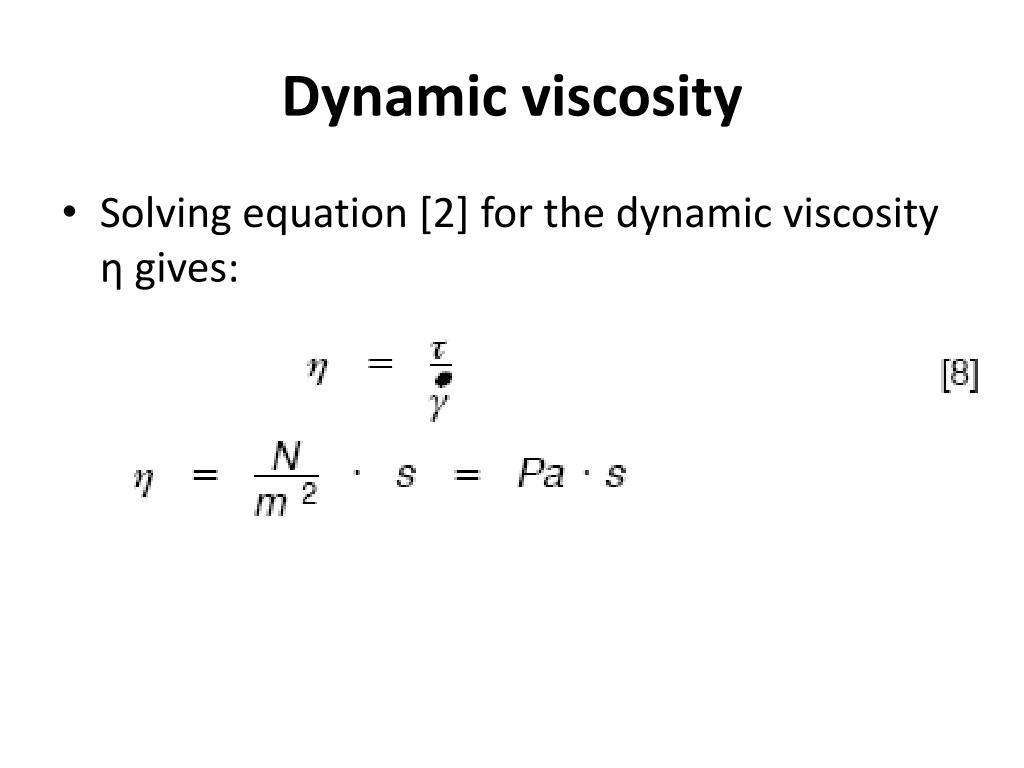

The mass (or weight) of a fluid is determined by gravity. A common viscosity unit is poise, which is equivalent to 0.1 Pa.s (or centipoise,which is one. Therefore, we say that steel has a greater density than ice cube. The unit of dynamic viscosity is kg/m.s,or equivalently, N.s/m2. Poise are metric units expressed as dyne·s/cm 2 or g/ (m·s). They may be the same size, but the steel cube weighs more than the ice cube. The SI units for dynamic (absolute) viscosity is given in units of N·S/m 2, Pa·S, or kg/ (m·s), where N stands for Newton and Pa for Pascal. Think about an ice cube and a cube of steel. Dynamic (cP) / Density = Kinematic (cSt)įor a given sample, with a density greater than one, dynamic viscosity will always be the higher number.ĭensity is the ratio of the mass (or weight) of the sample divided by the volume of the sample.
 Kinematic (cSt) x Density = Dynamic (cP). Density actually provides a way to convert between a kinematic and a dynamic viscosity measurement. The unit of measure of kinematic viscosity is Centistokes (cSt).Ī basic difference between the dynamic and kinematic viscosity measurements is density. The time is converted directly to kinematic viscosity using a calibration constant provided for the specific tube. There are several ways to find the kinematic viscosity of a fluid, but the most common method is determining the time it takes a fluid to flow through a capillary tube. Put another way, kinematic viscosity is the measure of a fluid’s inherent resistance to flow when no external force, except gravity, is acting on it. The other way is to measure the resistive flow of a fluid under the weight of gravity. One way is to measure a fluid’s resistance to flow when an external force is applied. Water at 20 ☌ has a kinematic viscosity of about 1 cSt. Other units are: 1 St ( Stoke) = 1 cm 2/s = 10 −4 m 2/s. The SI unit of the kinematic viscosity is m 2/s. This technical brief was supplied by Hydramotion.The kinematic viscosity is the ratio between the dynamic viscosity and the density of a fluid. Kinematic viscosity () designates the quotient of the dynamic viscosity of the fluid handled and its density. This is the ratio of the time of fl ow of 200 ml of fl uid to the time of fl ow of 200 ml of water at the same temperature in a standardized Engler viscosity meter.viscosities, SSF (Saybolt Seconds Furol) is used. This is the time for 60 ml of fluid to flow through the calibrated orifice of a Saybolt Universal viscometer at a specifi ed temperature, as prescribed by test method ASTM D 88. It is most usually encountered as the centistokes (cSt) (= 0.01 stokes). One stokes is equal to the viscosity in poise divided by the density of the fluid in g cm–3. This is the cgs unit, equivalent to square centimetre per second. One poiseuille is 10 poise or 1000 cP, while 1 cP = 1 mPa It is sometimes referred to as the “poiseuille” (symbol Pl).
Kinematic (cSt) x Density = Dynamic (cP). Density actually provides a way to convert between a kinematic and a dynamic viscosity measurement. The unit of measure of kinematic viscosity is Centistokes (cSt).Ī basic difference between the dynamic and kinematic viscosity measurements is density. The time is converted directly to kinematic viscosity using a calibration constant provided for the specific tube. There are several ways to find the kinematic viscosity of a fluid, but the most common method is determining the time it takes a fluid to flow through a capillary tube. Put another way, kinematic viscosity is the measure of a fluid’s inherent resistance to flow when no external force, except gravity, is acting on it. The other way is to measure the resistive flow of a fluid under the weight of gravity. One way is to measure a fluid’s resistance to flow when an external force is applied. Water at 20 ☌ has a kinematic viscosity of about 1 cSt. Other units are: 1 St ( Stoke) = 1 cm 2/s = 10 −4 m 2/s. The SI unit of the kinematic viscosity is m 2/s. This technical brief was supplied by Hydramotion.The kinematic viscosity is the ratio between the dynamic viscosity and the density of a fluid. Kinematic viscosity () designates the quotient of the dynamic viscosity of the fluid handled and its density. This is the ratio of the time of fl ow of 200 ml of fl uid to the time of fl ow of 200 ml of water at the same temperature in a standardized Engler viscosity meter.viscosities, SSF (Saybolt Seconds Furol) is used. This is the time for 60 ml of fluid to flow through the calibrated orifice of a Saybolt Universal viscometer at a specifi ed temperature, as prescribed by test method ASTM D 88. It is most usually encountered as the centistokes (cSt) (= 0.01 stokes). One stokes is equal to the viscosity in poise divided by the density of the fluid in g cm–3. This is the cgs unit, equivalent to square centimetre per second. One poiseuille is 10 poise or 1000 cP, while 1 cP = 1 mPa It is sometimes referred to as the “poiseuille” (symbol Pl). 
This is the SI unit of viscosity, equivalent to newton-second per square metre (N Many everyday fluids have viscosities between 0. It is the viscosity of a fluid in which a tangential force of 1 dyne per square centimetre maintains a difference in velocity of 1 centimetre per second between two parallel planes 1 centimetre apart.Įven in relation to high-viscosity fluids, this unit is most usually encountered as the centipoise (cP), which is 0.01 poise. CGS Unit of Viscosity The cgs unit of viscosity is poise (P), which has been used in honour of French physiologist Jean Léonard Marie Poiseuille. The SI unit of kinematic viscosity is square metre per second or m 2 /s. Named after the French physician Jean Louis Marie Poiseuille (1799-1869), this is the cgs unit of viscosity, equivalent to dyne-second per square centimetre. The SI unit of viscosity is the pascal second (Pa·s) or kg·m 1 ·s 1.







 0 kommentar(er)
0 kommentar(er)
